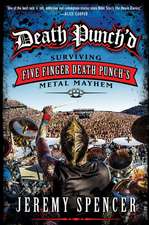The Chevalier Noverre, Father of Modern Ballet
Autor Deryck Lynhamen Limba Engleză Paperback – 21 iun 2009
Preț: 158.73 lei
Nou
Puncte Express: 238
Preț estimativ în valută:
30.38€ • 31.60$ • 25.46£
30.38€ • 31.60$ • 25.46£
Carte tipărită la comandă
Livrare economică 14-28 martie
Preluare comenzi: 021 569.72.76
Specificații
ISBN-13: 9780903102018
ISBN-10: 0903102013
Pagini: 222
Ilustrații: 1
Dimensiuni: 140 x 216 x 12 mm
Greutate: 0.26 kg
Ediția:Revised
Editura: Dance Books Ltd
Locul publicării:United Kingdom
ISBN-10: 0903102013
Pagini: 222
Ilustrații: 1
Dimensiuni: 140 x 216 x 12 mm
Greutate: 0.26 kg
Ediția:Revised
Editura: Dance Books Ltd
Locul publicării:United Kingdom








